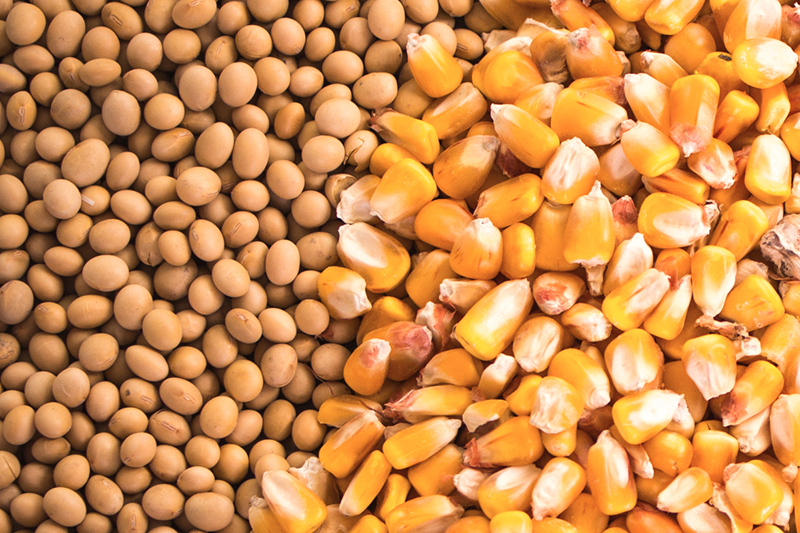Brazilian market continues with a set of price-containment attitudes

The Brazilian soybean crop is being reaped, and producers are making their trading and storage decisions. In several locations, the option has still been to retain soybeans and sell corn to guarantee space for the arrival of the soybean crop. Gradually, this attitude meets the short-term demand of the consumer sector. At the same time, a cut in the average weight of pigs lowers the demand scenario a little, but nothing that influences prices at this moment. On the other hand, avian flu and BSE in Pará do not influence demand and/or prices in Brazil at this time. The fact is that the market is still trying to reach the second crop with only the summer corn available, and this is the great challenge for the market this semester, given the delay in planting the corn second crop.
Regional harvests are evolving and offering some supply points to the Brazilian domestic market. Rio Grande do Sul and Santa Catarina are still reaping and with concerns about space for soybeans. There is still a lot of wheat in warehouses, and producers are trying to liquidate some volumes due to this movement. This helped bring down prices last week, not least because indications at ports dropped to BRL 90, worsening prices in the interior. The harvest in the south and southwest of Paraná must advance from the end of the month, in view of the rains that will lengthen crop maturation. The market’s doubt is whether these regional harvests are enough to meet all the market demand until July, when the second crop arrives, and southern Brazil accounts for almost 48% of the national demand. This is the bet the market is making.
In the Southeast, some crops are arriving in São Paulo and southern Minas Gerais. However, in Minas Gerais, the harvest is in May, and until then the market also needs to be supplied. The soybean harvest is advancing, logistics are being dominated by soybeans, but consumers are trying to hold prices as much as possible in this first half of the year. For this, they seek to stretch stocks as much as possible, delay purchases as much as possible to impose some selling pressure on producers who need space, and producers are more likely to hold soybeans than corn. At this point, distorted price information in São Paulo and aggressive operations on B3 through futures brokerages have also been used to contain and reduce any bullish vision of futures prices, which always end up influencing the physical market. In the Midwest, the picture is of soybean harvest and corn planting. Producers are not advancing aggressively in second-crop sales at the current prices. Below BRL 60 in Mato Grosso, Goiás and Mato Grosso do Sul below BRL 65, and Paraná below BRL 75. Some barter volume only but without a large flow of sales to trading companies yet. With the delay in the corn second-crop planting, producers are more afraid to enter into second-crop contracts before seeing the potential conditions of crops. Owing to the projected rains for March, the initial picture will be of good early development, as is already happening with the crops planted in February.
The internal market has a long way to go until the arrival of the 2023 crop, which will occur later than normal. It is not possible yet to say that there will be cuts in the area with corn in the second crop, as there is no good second option for planting. Producers, however, are trying to adjust the space for the record soybean production and choose to sell corn while retaining soybeans. This movement has occurred since February, and the volume of corn shipments has increased even in March.
Read also
Wheat in Southern Brazil Impacted by Dry Weather and Frosts
Oilseed Industry. Leaders and Strategies in the Times of a Great Change
Black Sea & Danube Region: Oilseed and Vegoil Markets Within Ongoing Transfor...
Serbia. The drought will cause extremely high losses for farmers this year
2023/24 Safrinha Corn in Brazil 91% Harvested
Write to us
Our manager will contact you soon



